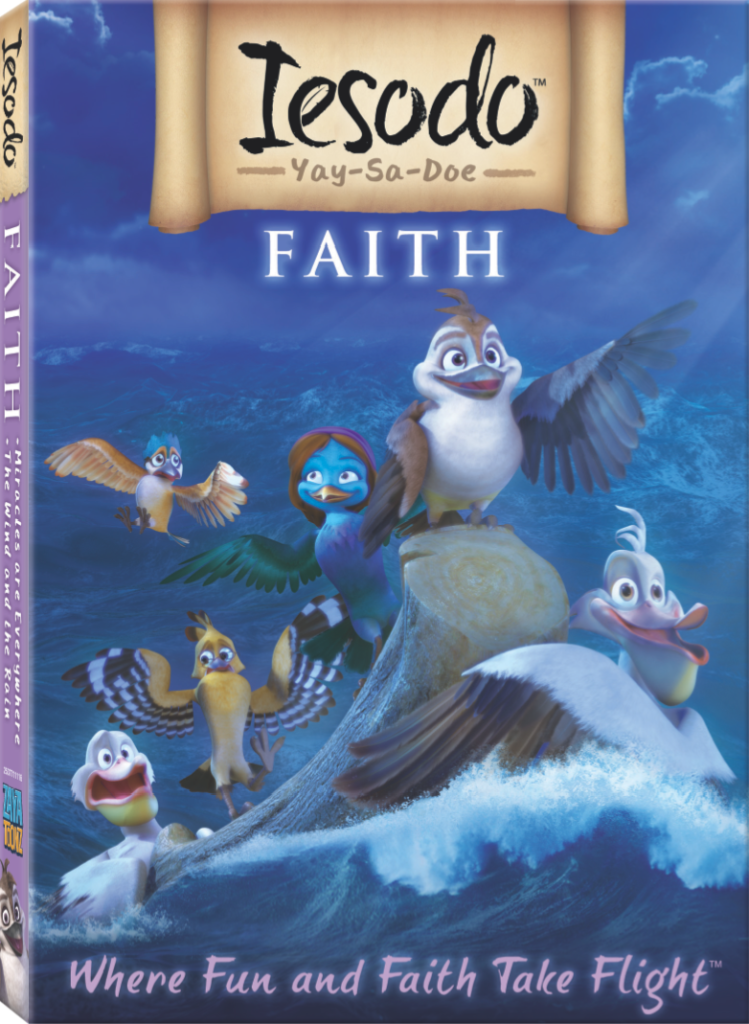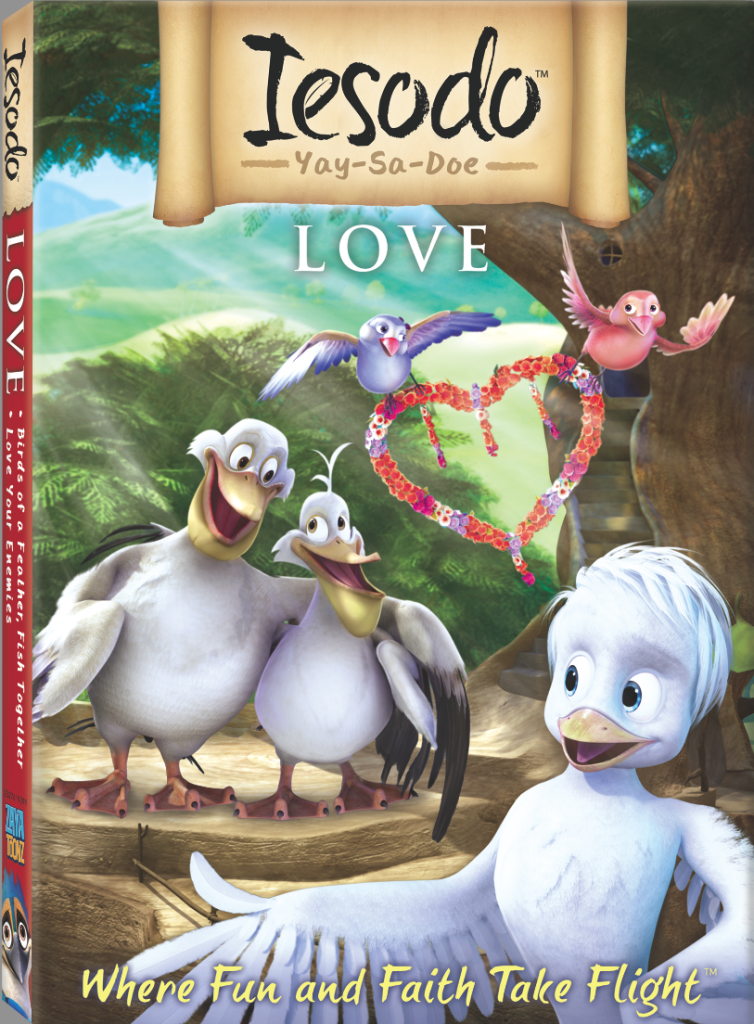The new children’s animated video series Iesodo (the way of Jesus) is produced and written by our most recent guest, Rob Loos. I had the opportunity to preview two of their titles, Faith and Love, which the publishers provided for our honest review.
The Iesodo stories are based on the life and teachings of Jesus and told through a community of various bird species. At first I had a problem with Jesus, the almighty Son of God, being represented by a skinny-legged dove. I was used to Aslan, C. S. Lewis’s allegorical representation of Jesus as a lion in The Lion, the Witch, and the Wardrobe:
“Safe? . . . Who said anything about safe? Course he isn’t safe. But he’s good. He’s the King, I tell you.”
Iesodo is much milder by comparison. He’s good, kind, loving, and faithful. He’s diligent about studying ancient scrolls (representing Scripture). He gently teaches, corrects, and provides for his followers.
However, when he stands up to the hoopoes, who represent the Pharisees and Sadducees, he’s pretty meek. I see nothing of the Jesus who turned over the money changers’ tables and called the Pharisees “whitewashed tombs” (Matt. 23:27). Perhaps Jesus’ power and majesty will be better represented in later episodes.
I also couldn’t see Peter, a strong fisherman, as the bulbul Rocky. He just seemed too small, meek, and weak for Peter.
In the videos I watched, the animation was wonderful, the music catchy and enjoyable, and the stories sweet. In Love, I especially enjoyed “Together,” the song a newly married bird couple sings at their wedding.
With very cute songs and animation, this video also presents the story of Zacchaeus as a ruthless tax collector. Iesodo teaches the friends the value of loving their enemies, and Zack learns that sharing with friends is a whole lot more fun than hoarding everything for himself.
The Iesodo stories deal with potentially sensitive issues in a child-friendly way. Jesus’ miracle of turning water into wine at the wedding at Cana is reenacted as Iesodo turns water into nectar. Later, a bird is brought to Iesodo for stealing another bird’s mate. She is truly sorry, and Iesodo tells her to go back to her flock. “Follow your heart and do what’s right from now on,” he says.
I like the emphasis here on true repentance and doing what’s right. But I don’t agree with “follow your heart.” Following her heart is what got this little bird into trouble in the first place. The Bible tells us “the heart is deceitful above all things (Jeremiah 17:9),” so I think Iesodo should have worded his advice differently. Parents would do well to point out to their children that sometimes emotions lie, so we need to stick to what God’s Word teaches instead of what our hearts may tempt us to do.
 Faith shows Iesodo feeding five thousand birds with five acorns and two fish, a cute twist on the original. On the way home, Iesodo’s friends have to cross a stormy sea. I liked the creative way the writer found to get airborne birds down onto the water. Then Iesodo could calm the sea and Rocky could learn about faith by walking on water. By the way, the animation of the storm and waves was breathtaking.
Faith shows Iesodo feeding five thousand birds with five acorns and two fish, a cute twist on the original. On the way home, Iesodo’s friends have to cross a stormy sea. I liked the creative way the writer found to get airborne birds down onto the water. Then Iesodo could calm the sea and Rocky could learn about faith by walking on water. By the way, the animation of the storm and waves was breathtaking.
Faith also encourages viewers to have faith and act on it, but it never says where to place that faith. Who or what must they put their faith in? Themselves? Iesodo? Faith itself? Tim Timmons rightly points out in his commentary that we need to put our faith in Jesus, so it’s important for parents to explain this to their children.
Earlier in the video, Iesodo had sent out his friends to spread the “good news,” recalling the time Jesus sent out His disciples in Matthew 10, Mark 6, and Luke 9. The birds define the good news as “helping, sharing, learning, and loving.” I like the message in the song, and I think children will be inspired to help, share, learn, and love more because of it.
However, this “good news” falls short of the true gospel (the “good news”), which is God’s reconciliation with sinful mankind through Jesus. I’m not sure how the producers of Iesodo could have presented the gospel more clearly at a children’s level in Faith, but I hope they are able to do that in future videos.
Meanwhile, parents can access Tim Timmons’s commentary on each story and the referenced Bible verses to help teach their children how the stories relate to the real life of Jesus.
The danger I see here is if parents don’t know or don’t teach their children the true gospel, then viewers might accept only a so-called “social” gospel: Do good and help those in need. Without a true relationship with Jesus Christ, this is purely human effort and doesn’t result in saving faith. (See Ephesians 2:8–9.)
When Jesus sent out His disciples, which this event represents, He gave them power. He told them to preach that the kingdom of God had come and to cast out demons, heal the sick, and raise the dead. The disciples also preached that men should repent (Matthew 10, Mark 6, Luke 9).
The Iesodo videos, designed for a crossover audience of both Christians and non-Christians, are merely a starting point to share the truths found in the New Testament. The producers don’t pretend anything else. As such, I think they do an excellent job. I just hope and pray that the children and parents who watch the videos will eventually understand and accept the whole of the good news, that Jesus came to seek and save the lost and pay our sin debt in full. I pray they will know not just Iesodo, the way of Jesus, but Jesus Himself.
To find links for all Heritage of Truth interviews and blog posts, go to TV and Blog by Topic or TV and Blog by Guest/Author.

